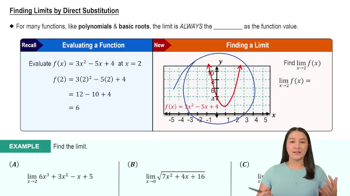Suppose the rental cost for a snowboard is \$25 for the first day (or any part of the first day) plus \$15 for each additional day (or any part of a day).
Evaluate lim t→2.9 f(t).
 Verified step by step guidance
Verified step by step guidance Verified video answer for a similar problem:
Verified video answer for a similar problem:



 5:21m
5:21mMaster Finding Limits by Direct Substitution with a bite sized video explanation from Patrick
Start learning